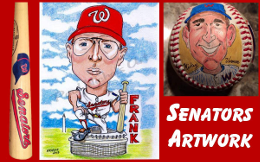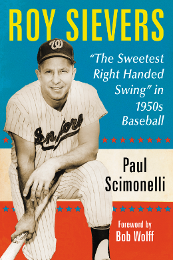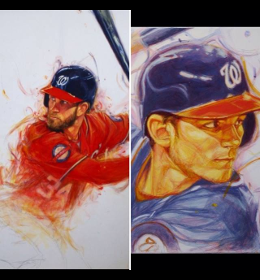Were members of the 1886 Washington Club guilty of fixing games? There were warnings throughout the year that something was up. No doubt rumors spread by people who had some knowledge of the bets that had been placed. The evidence indicates that at least one game was fixed, but there could easily have been several others.
We proceed like someone you see on a crime program.
First a bet must be financially rewarding for the player since there is a potential loss of employment, the reward had to be enough to justify the risk. A top tier player like Buck Ewing made $3,500 in 1886. Most players made around $2,000, others much less. Players were also subject to fines from the management and umpires for various infractions, so their take home pay was often less than their salary. Baseball was not the money maker it would be later on, ball players during this time also worked jobs after the season was over.
Second, proximity/familiarity to gamblers and bookies. At this time there were two “notorious” District betting parlors, Kennedy “baseball pool rooms” and Jones & Company “horse pools.” Pool halls were very popular, serving as a social gathering place as well. Michael Scanlon had his billiard parlor too. It was common practice to have telegraph operators posted at the ball park to transmit inning by inning scores, even individual results in some circumstances. Pool rooms became the epicenter of sports gambling, some bets were fairly large. Several members of the Washington team were avid players. Jimmy Knowles and Paul Hines were local players who could easily have contrived in secret to throw a game or two.
The players, Dupee Shaw had a reputation of being hard to manage. Jimmy Knowles was considered a talented but under motivated player. We feel that both could easily have gone over to the “dark side.” Paul Hines an enigma. He had good and bad qualities, he saved a person’s life one year. But he had just gotten married but was a free spender and would ask for an advance in December on his 1887 salary. His stay in Washington would be short lived and he would soon leave the city in pursuit of more money. He had qualities like another heavy batter who would spend a brief period in Washington, Ed Delahanty. Both were talented sluggers who enjoyed success but ultimately their love of money proved a liability.
It seems clear that the game of 8 June was thrown by Dupee Shaw and Jimmy Knowles, with the possible assistance of Barney Gilligan.
This following account of their actions is suspicious, “Shaw and Gilligan played the worst game they have ever exhibited, the former merely tossing the balls in, not using any or his swift curves or down-shoots at all, while his throwing to bases, usually correct, was disgusting. Gilligan, throwing to third, was also very bad, while Knowles’s action in not putting out John Cahill at second, instead of Joe Quinn at first, was an error that seemed to have been purposely committed, as it was one that lost the game.”
Then there is verification about the amount and nature of money being bet on the game, “the pool-rooms on the morning of the game, the Nationals were the favorites by l00 to 80, but a certain room where some of the men go frequently was offering odds of 2, 3, and 4 to 1 that the St. Louis would win.”
An investigation is ordered but no one is charged and it is unclear what review was done. We can only assume that the matter was reviewed. It could be that just a matter of poor play; it was endemic on the team in 1886. But something was not right regarding the betting. You have to ask, would the team have wanted to have its best twirler and one or two others suspended from the game. Food for thought.
The next incident takes place on Monday, 21 June, in New York, a 7 to 3 loss. The Senators are leading 3-1 until the seventh inning when the Giants make six hits to go with critical errors by Phil Baker, at first, and Jimmy Knowles.
To have the following printed in the papers in this period; clearly indicate that all is not well.
About Dupee Shaw, “His demeanor is not of the best, and managers have always trouble
in keeping him disciplined.”
But the whole nine is also taken to task, “The whole nine might be investigated in this
way and the spots exposed. When a club bats strongly and then piles up error after error, for instance, sixteen in each of the Chicago games of Wednesday and Thursday, it is next to an impossibility to win, and right here lays the whole trouble. Then, too there are times
when a few sacrifice hits, or bunching of the game, would bring in winning runs; but, as
there is too much individual record-playing this is never done to nay advantage.”
The item that catches our attention is the huge fine ($100) by imposed by Manager Michael Scanlon on Paul Hines, Ed Crane and Jimmy Knowles. Knowles in particular, is taken to take for his lack of hustle. What the fine is specifically for is not stated, poor play of course but could there have been something else? Players were fined for many issues but the amount of the fine is outrageous, for the period, unless there was more to it. Scanlon will later talk about the poor play in New York but adds the less said of it the better. Was the fix in? I think in this case it might have been. Shortly after this incident, Dupee Shaw is benched for indifferent playing, but Bob Barr was in the box on the 21st.
In September the situation is so grave that the press reports on Manager John Gaffney’s statement gambling on the stadium grounds. The police are unable to deal with the issue, leaving control over the problem to the team. It is doubtful if the team ever decided to “black list” known gamblers. Maybe action was taken against flagrant violators because later a section of the ball park was used by gamblers and would be called “Wall Street.”
The final series against Detroit is another situation where one or more of the Washington players may have conspired to throw a game. On 10 October the Sunday Herald writes, “The “chump playing” – and that is a tame way of putting it – of Paul Hines, Jimmy Knowles, Sadie Houck, Dupee Shaw, and one of two others was enough to madden the crowd and to call forth the remark that the gang was working to help the Detroit’s along in the pennant race.” A pretty strong charge.
On 4 October Washington played the Wolverines in a four game series. Detroit was trailing Cap Anson’s Chicago nine at the time. A 4 to 2 loss to Detroit, the pitching of Dupee Shaw and Jimmy Knowles poor play in the field are listed as why Washington loss.
A doubleheader is played on the 5th, the first game is a 10 to 7 loss. John Henry pitches poorly but no real evidence of game fixing. But in the second game Dupee Shaw and Barney Gilligan help lose the game. The press notes, “Washington outplayed Detroit and it is a tough loss.”
The final game on the 6th is a 2 to 1 loss in extra innings. Dupee Shaw and Sadie Houck are commended for their fine play. So it appears that only two games in this series are in question.
The final series against Kansas City is outrageous. Three games are forfeited to Washington. The game on 9 October, the second game of the doubleheader is suspicious. A lot of money being bet in Kansas City but in other cities on this game. Washington won this match, so maybe the fix was in on the other side. Certainly few could have cared about a meaningless game between two tail-enders.
The need to know who was going to pitch for Washington is understandable, but to bet against Frank Gilmore is odd. Gilmore was having a pretty good year, far better than the one posted by Dupee. If I was going to bet I would have put my money on Gilmore. So was it all a ruse, hard to say but the last games against Kansas City are the strangest we have ever reviewed.
There are other games which make you wonder of the fix as in but clearly several games were probably fixed. It is a black mark against the cities unique baseball history.






